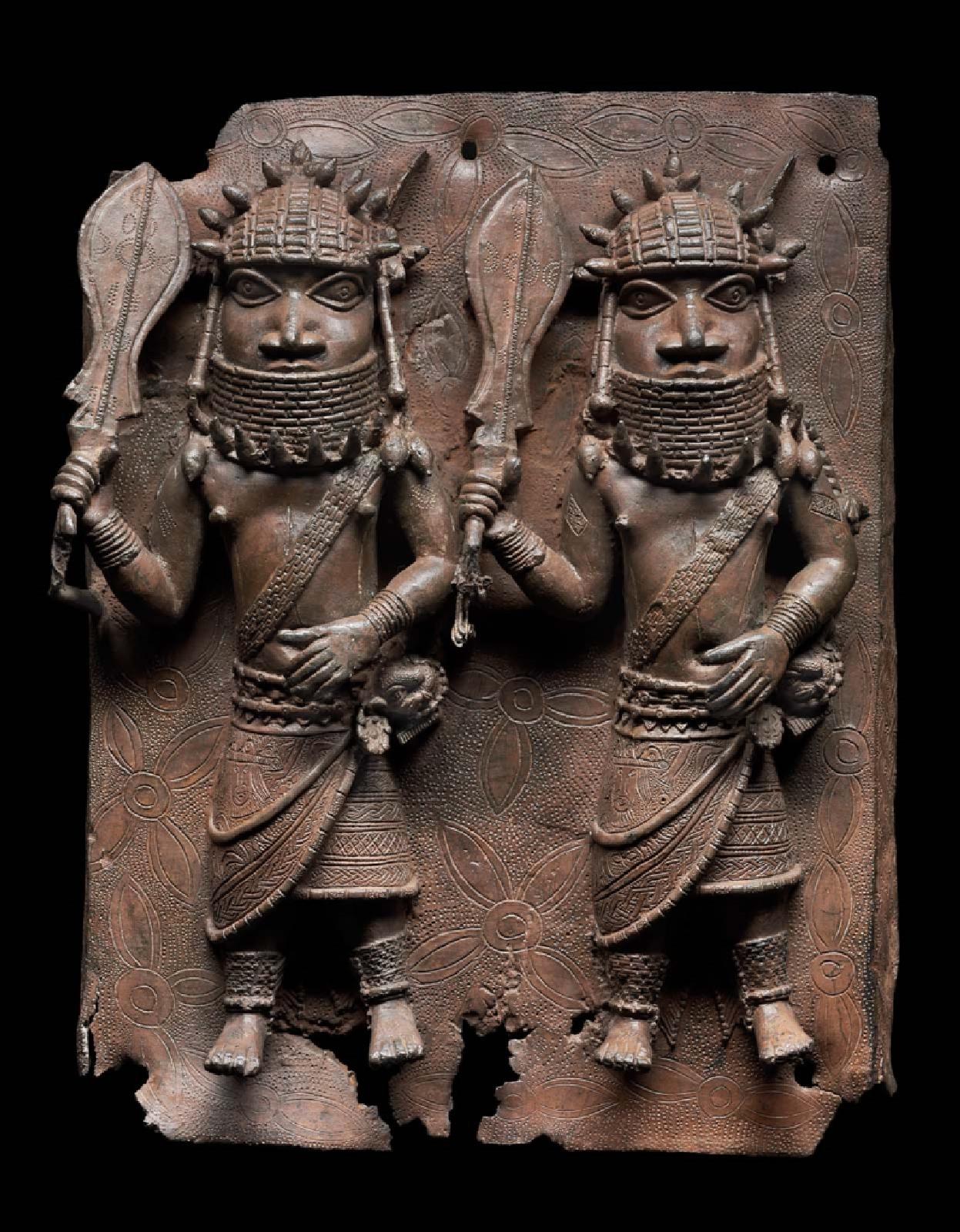The so-called Benin Bronzes (made of brass and bronze) are a group of masterpieces that include elaborately decorated cast plaques, commemorative heads, animal and human figures, items of royal regalia, and personal ornaments. They were created from at least the 16th century onwards in the West African Kingdom of Benin, by specialist guilds working for the royal court of the Oba (king) in Benin City. Most of these objects were looted by British forces during the Benin Expedition of 1897 as imperial control was being consolidated in Southern Nigeria. Now Nigeria is fighting for the restitution of this looted art.
This plaque we present today depicts two senior courtiers with ceremonial swords held aloft. These swords were used in special celebrations at court, when high-ranking men would send them twirling into the air and catch them before they fell to the ground. The figures on this plaque are wearing a wealth of coral beads, which can be seen in their crowns, high necklaces, bands crossing the chest, and anklets. The leopard-face ornaments cinching the men’s wrappers on each man’s left hip, also point to the king’s power; the Benin king was often metaphorically compared to a leopard, a fast, powerful, and stealthy animal.
In the 16th century, the kings of Benin ruled more than two million subjects in an area about the size of New England. During this period, the sprawling palace in Benin City was made up of many courtyards that could host large crowds, as well as private areas for the royal family and members of the court. One of the courtyards was decorated with more than 850 bronze plaques like this one, which were attached to the square pillars supporting the roof of the veranda that shaded the perimeter of the space. Oba Esigie, who reigned from 1517 to the 1550s, likely commissioned this massive art project as a way of asserting his authority after a succession struggle and civil war. His son Orhogbua, who reigned from the 1550s to the 1570s, may have completed the vast project after his father’s death.
Dear DailyArt users, we plan to launch a new version of the DailyArt app. Please review our plans and possibly support the development of the app. <3
P.S. Let's take a look at some fascinating masterpieces from the Benin Kingdom!


 Unknown Artist
Unknown Artist